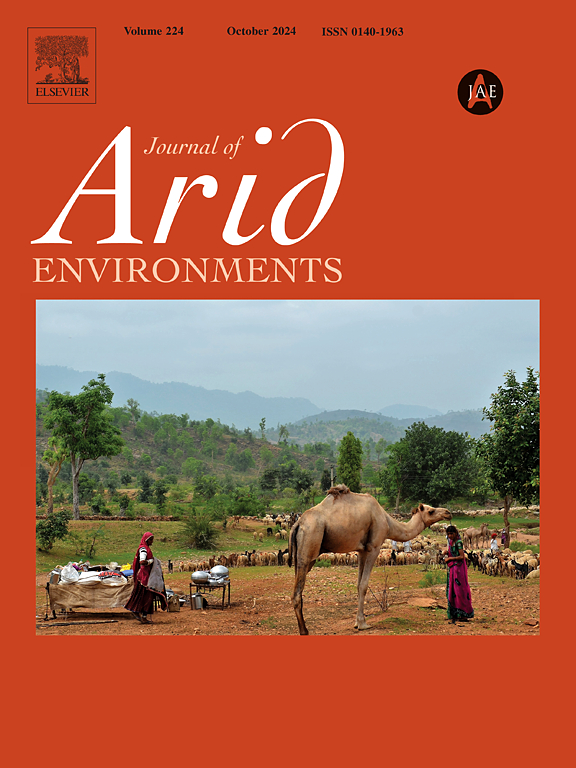Dune elongation and hunting strategy during the Terminal Pleistocene (Ramonian): Insights from Mizpor Ashalim, northwestern Negev dunefield margins, Israel
IF 2.6
3区 环境科学与生态学
Q2 ECOLOGY
引用次数: 0
Abstract
The Middle Epipalaeolithic Ramonian culture, endemic to the Negev-Sinai desert, incorporates highland occupations alongside lowland dune-associated localities. The lowland sites, dominated by microlithic tools, have been hypothesized to be prime hunting settings. Here we investigate this hypothesis based on the data from Mizpor Ashalim - a new Ramonian site located upon a falling dune overlooking the central Besor Valley. The study incorporates analysis of projectile damage on microlithic tools, geomorphology, portable OSL profiling, and OSL ages of the dune deposits, as well as Normalized Difference Vegetation Index (NDVI) investigation. GIS mapping of relevant sites alongside the ancient dune-dammed water bodies constitutes an additional methodological tool newly applied in the current study.
The results support the hypothesis and suggest that Ramonian hunting strategy was associated with dune-dammed, medium-sized basins that formed ecological niches following winter floods. The study sheds new light on adaptations developed by different cultural entities occupying the region during the Terminal Pleistocene and their connection with changing environmental settings. At the same time, it emphasizes technological continuity throughout the cultural sequence in the arid environments of the Southern Levant, expressed in microliths production and projectile design. This continuity, not observed in the Mediterranean climate zone, underscores the importance of understanding the social and economic dynamics in the desert areas of the Southern Levant to comprehend the processes that led to sedentism and food production in the region.
末更新世(Ramonian)时期的沙丘伸长和狩猎策略:从以色列内盖夫西北部沙丘边缘的 Mizpor Ashalim 获得的启示
内盖夫-西奈沙漠特有的中上古时代拉莫尼安文化包括高地遗址和与沙丘相关的低地遗址。低地遗址以微石器为主,被认为是狩猎的主要场所。Mizpor Ashalim 是一个新的拉蒙时期遗址,位于一个俯瞰贝索尔河谷中部的下陷沙丘上。这项研究包括分析微石器上的弹丸损伤、地貌、便携式 OSL 分析、沙丘沉积的 OSL 年龄以及归一化差异植被指数 (NDVI) 调查。研究结果支持了这一假设,并表明拉蒙狩猎策略与沙丘淤积的中型盆地有关,这些盆地在冬季洪水过后形成了生态壁龛。这项研究揭示了更新世末期占据该地区的不同文化实体的适应性及其与不断变化的环境之间的联系。同时,它还强调了南黎凡特干旱环境中整个文化序列的技术连续性,表现在微石器生产和射弹设计上。这种连续性是地中海气候区所没有的,它强调了了解南黎凡特沙漠地区的社会和经济动态对于理解该地区定居和粮食生产过程的重要性。
本文章由计算机程序翻译,如有差异,请以英文原文为准。
求助全文
约1分钟内获得全文
求助全文
来源期刊

Journal of Arid Environments
环境科学-环境科学
CiteScore
5.70
自引率
3.70%
发文量
144
审稿时长
55 days
期刊介绍:
The Journal of Arid Environments is an international journal publishing original scientific and technical research articles on physical, biological and cultural aspects of arid, semi-arid, and desert environments. As a forum of multi-disciplinary and interdisciplinary dialogue it addresses research on all aspects of arid environments and their past, present and future use.
 求助内容:
求助内容: 应助结果提醒方式:
应助结果提醒方式:


